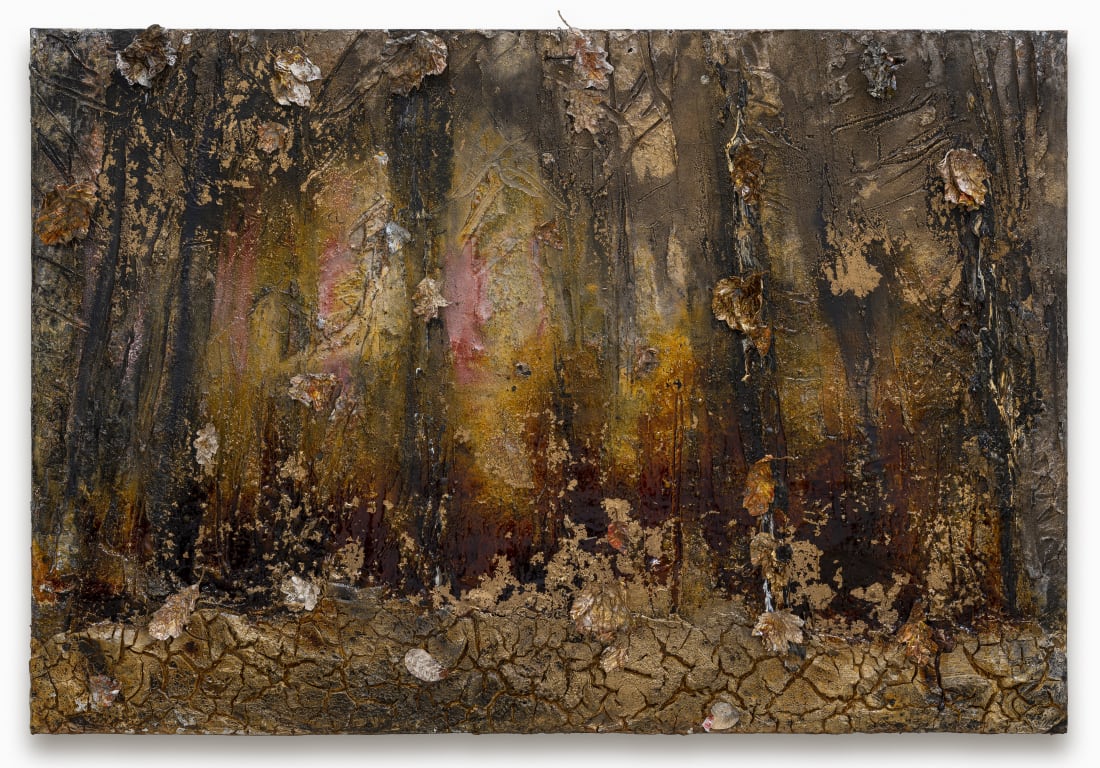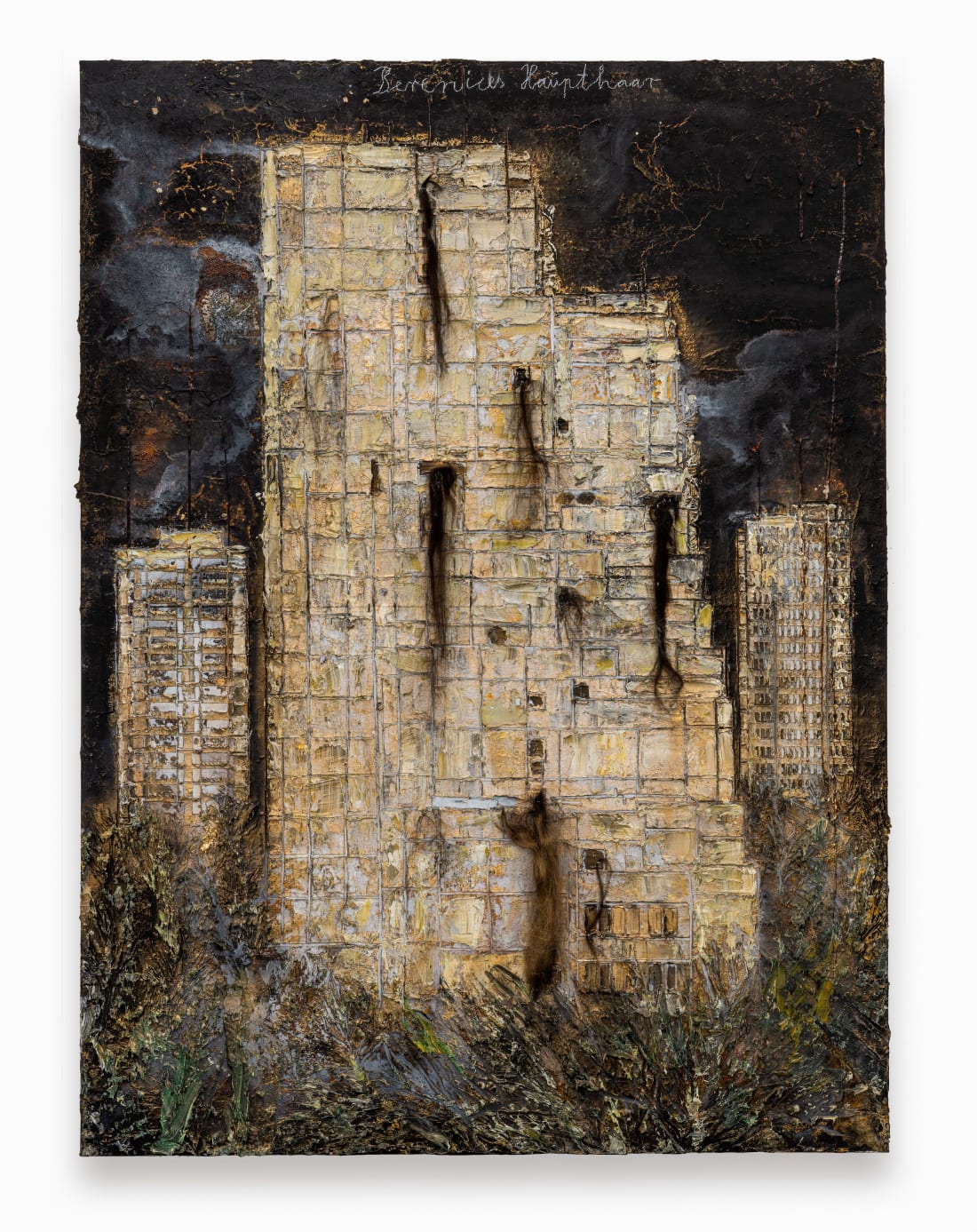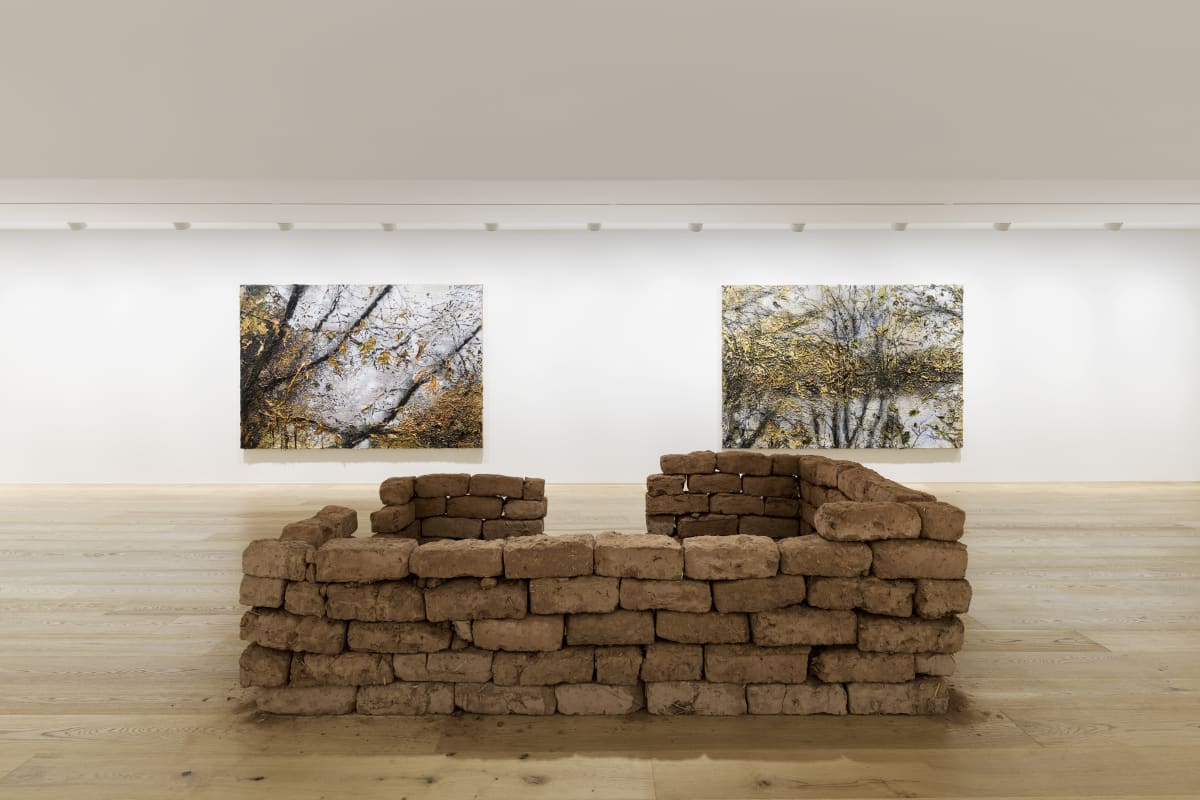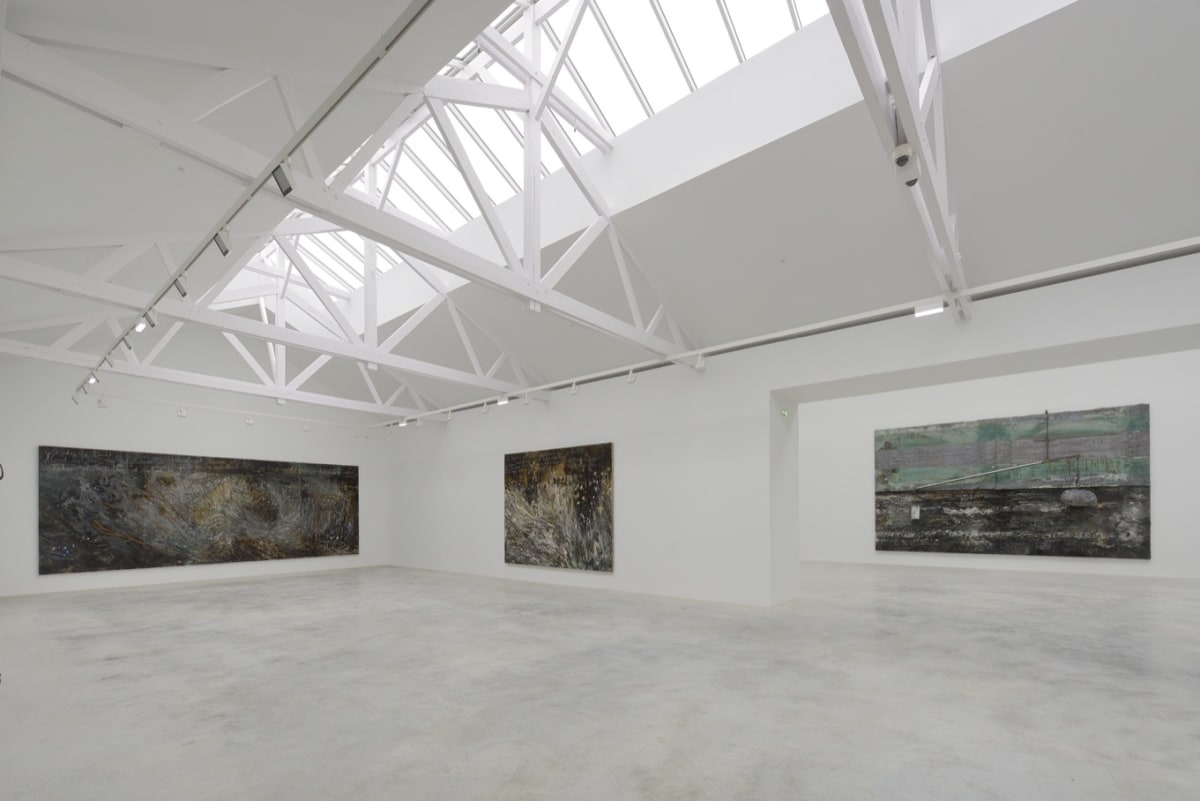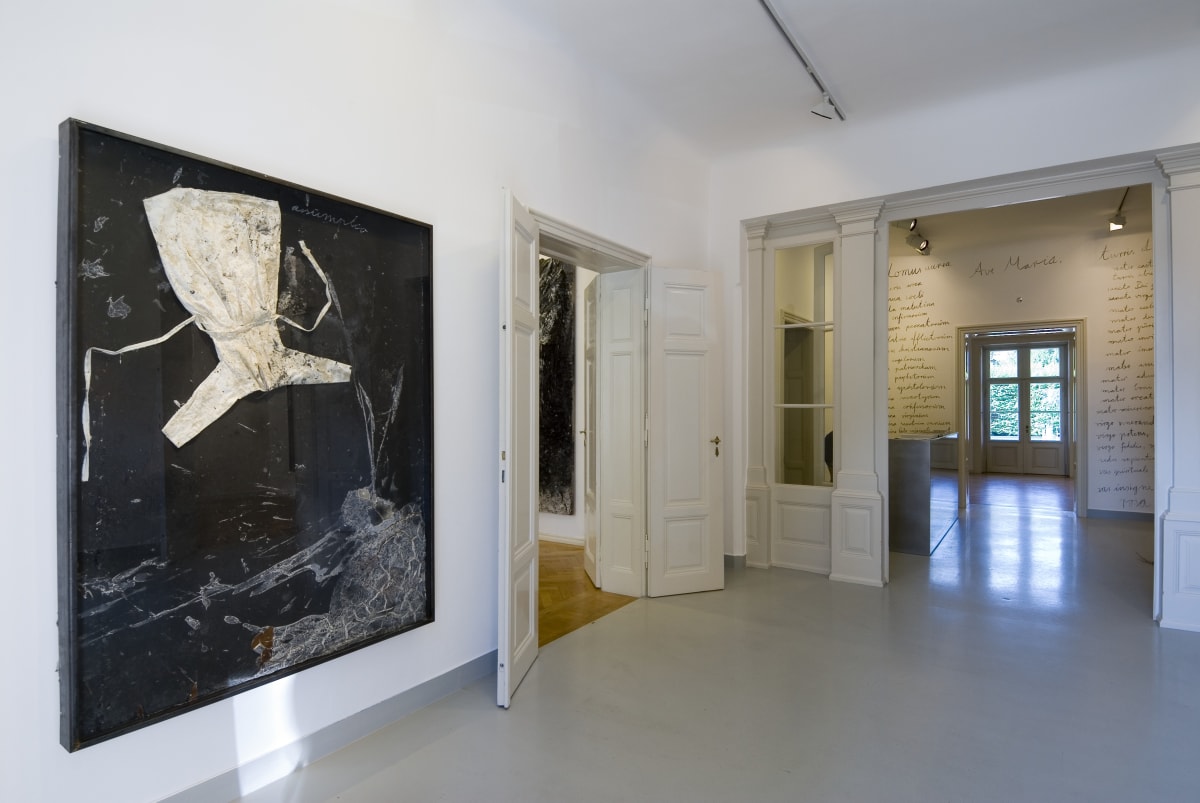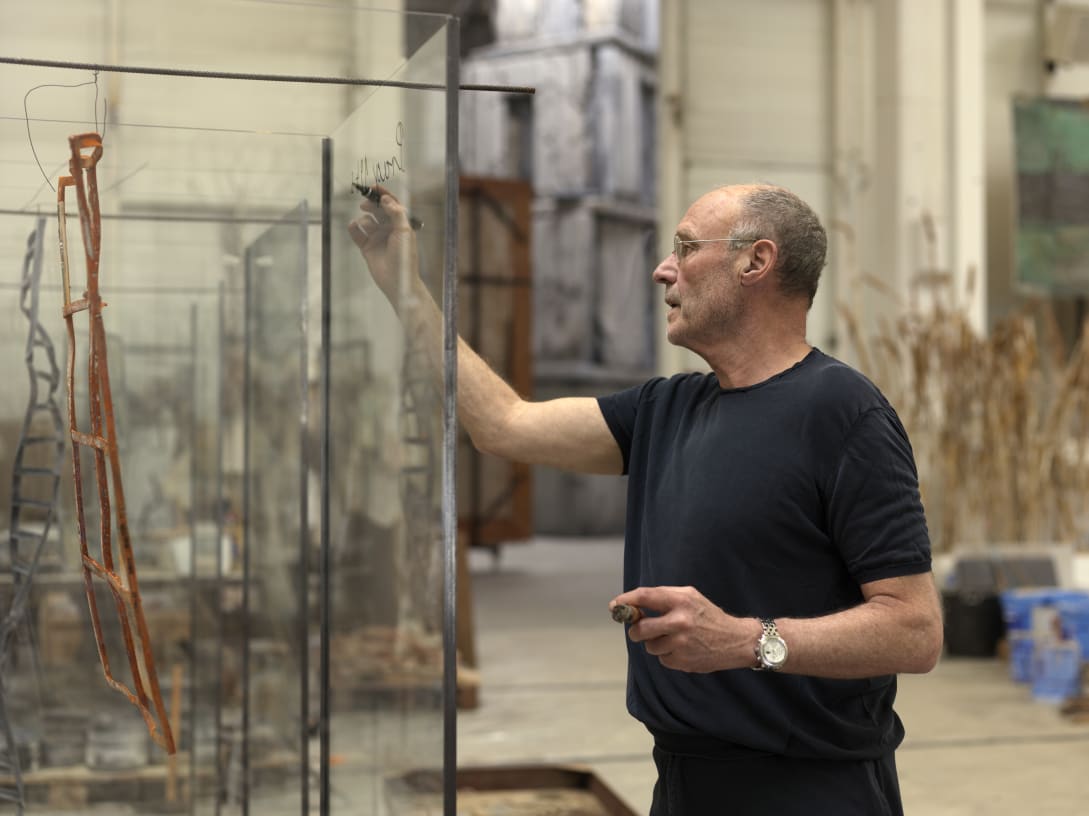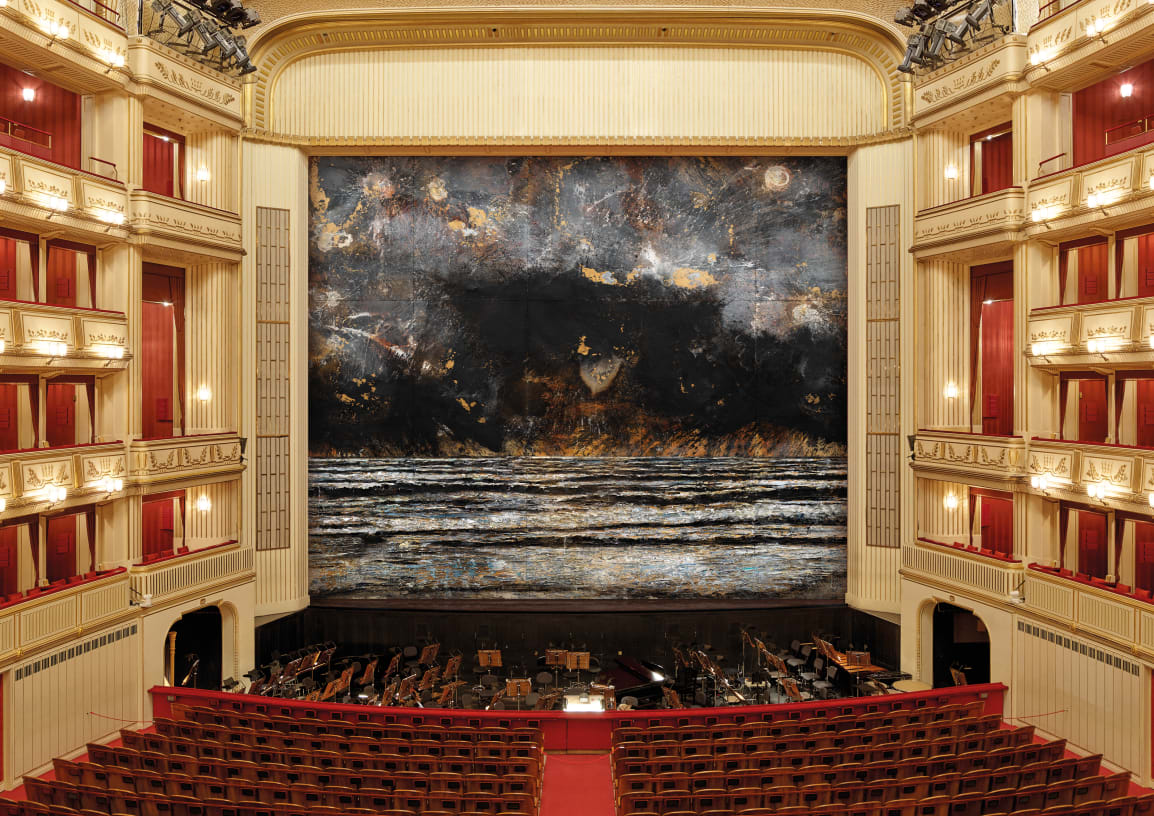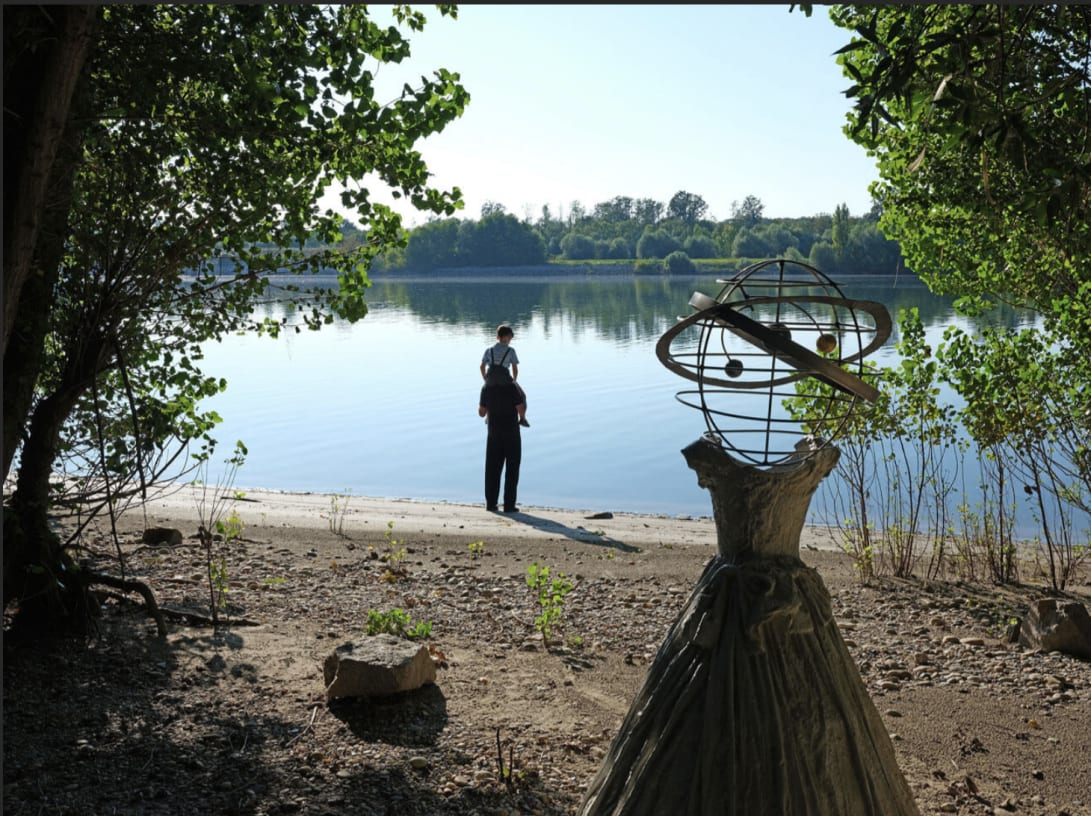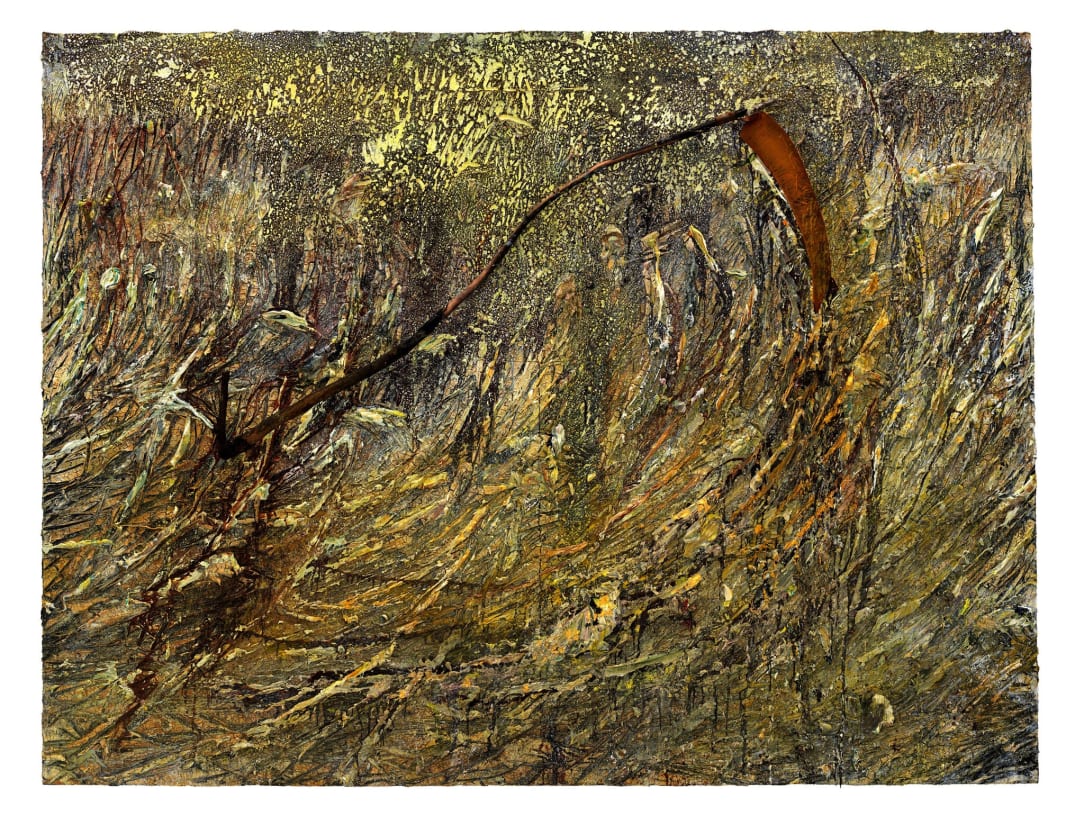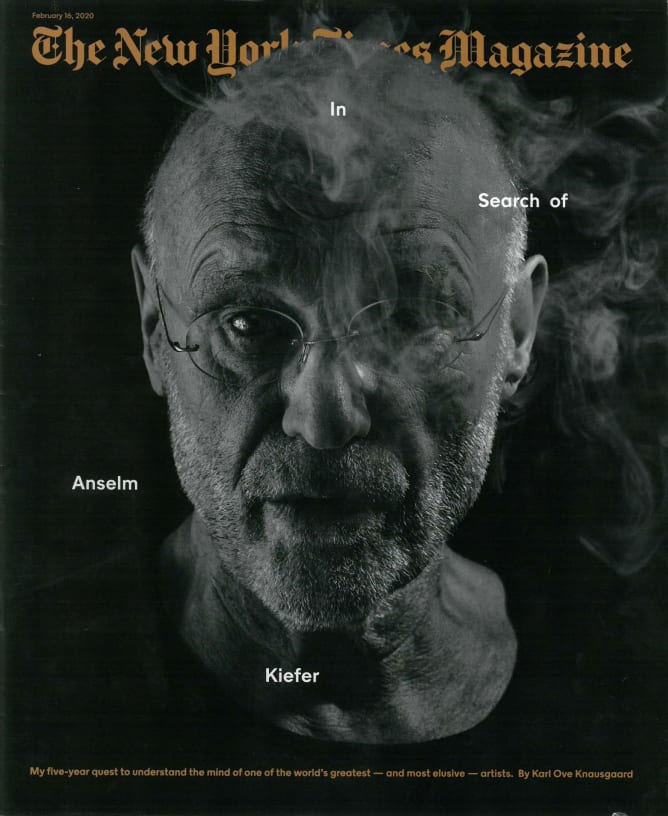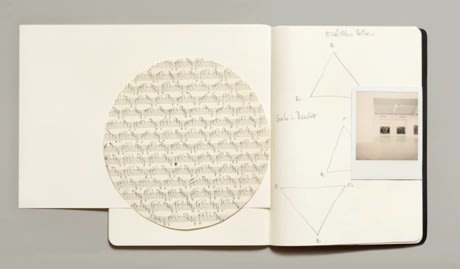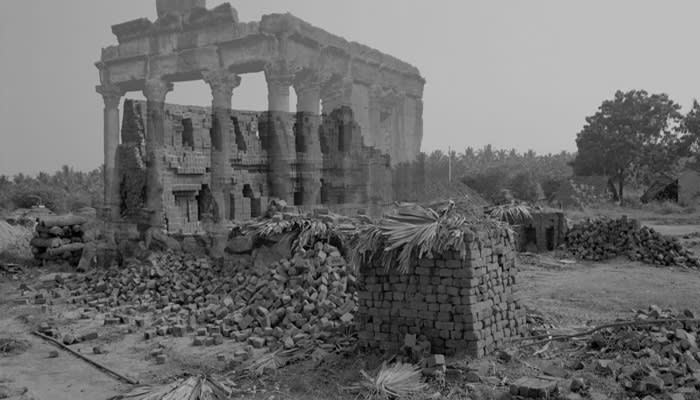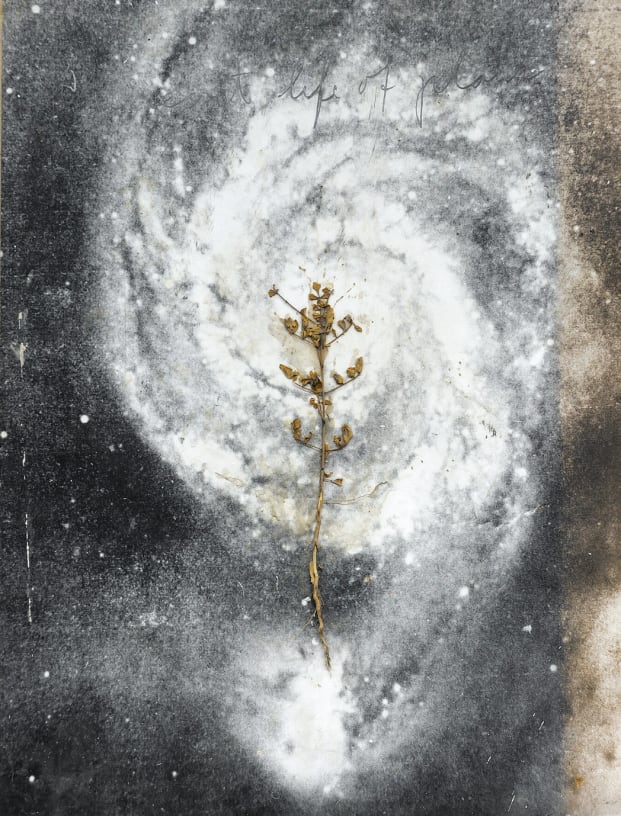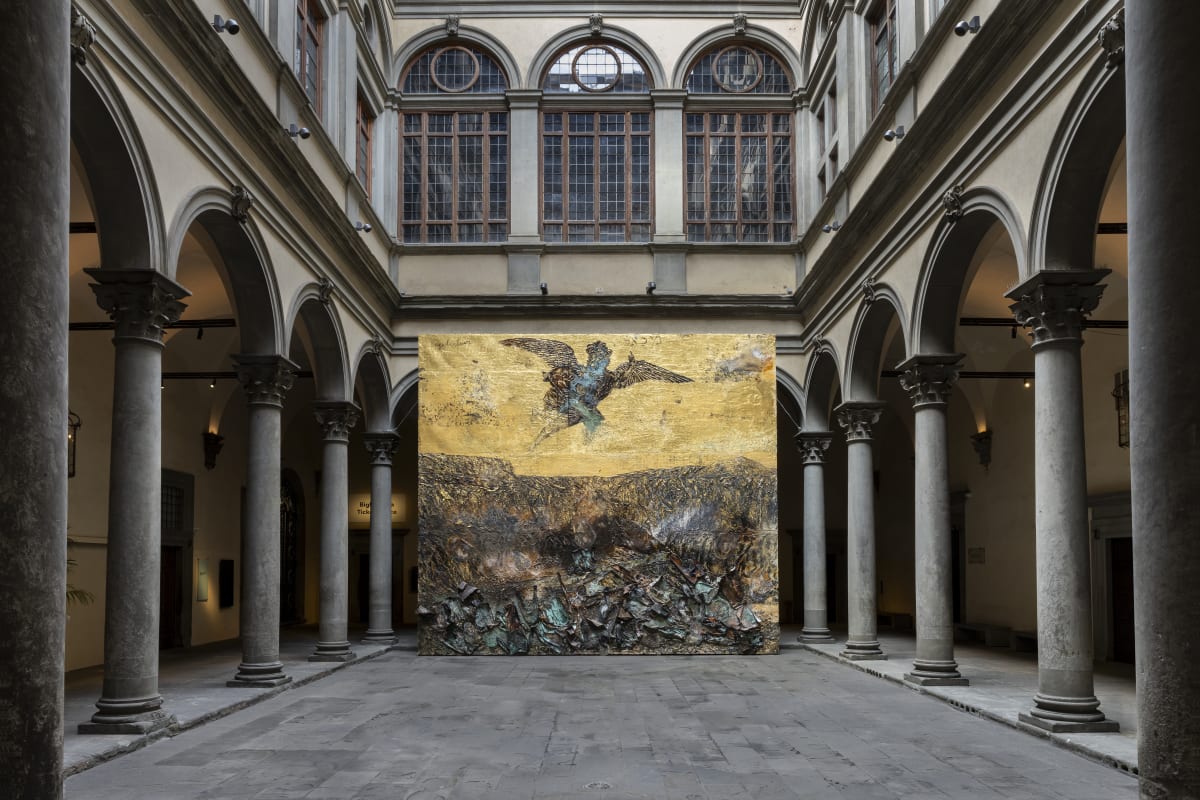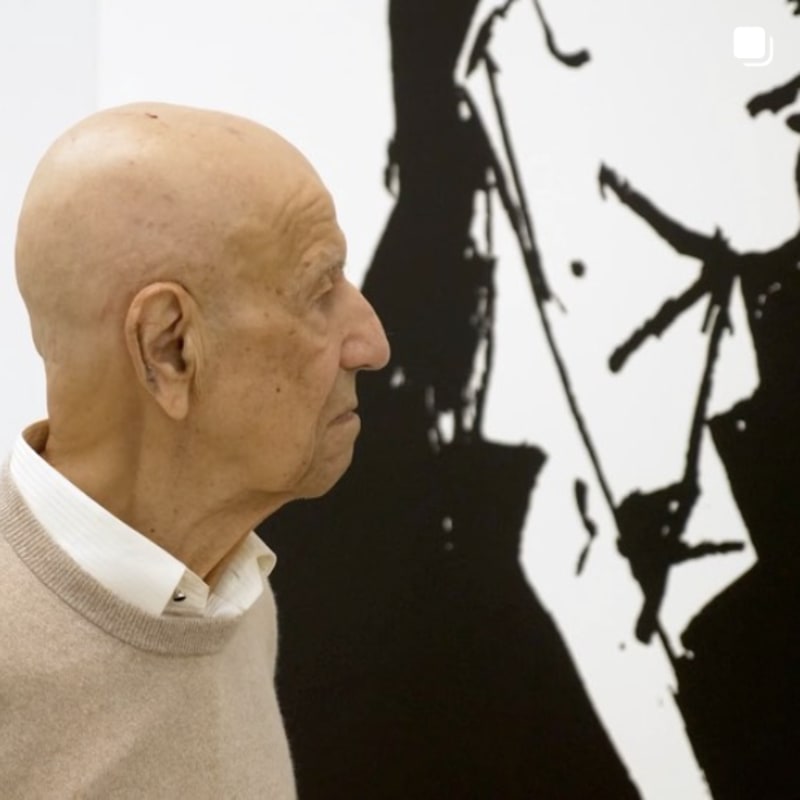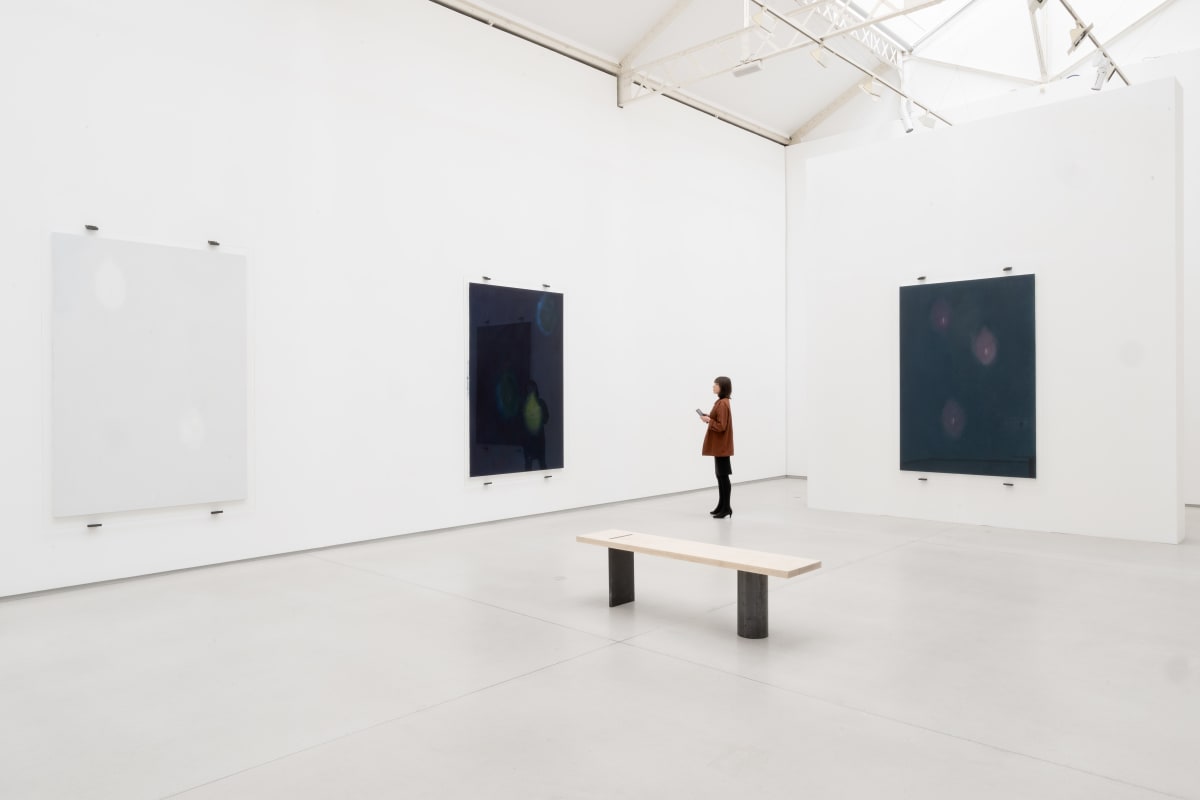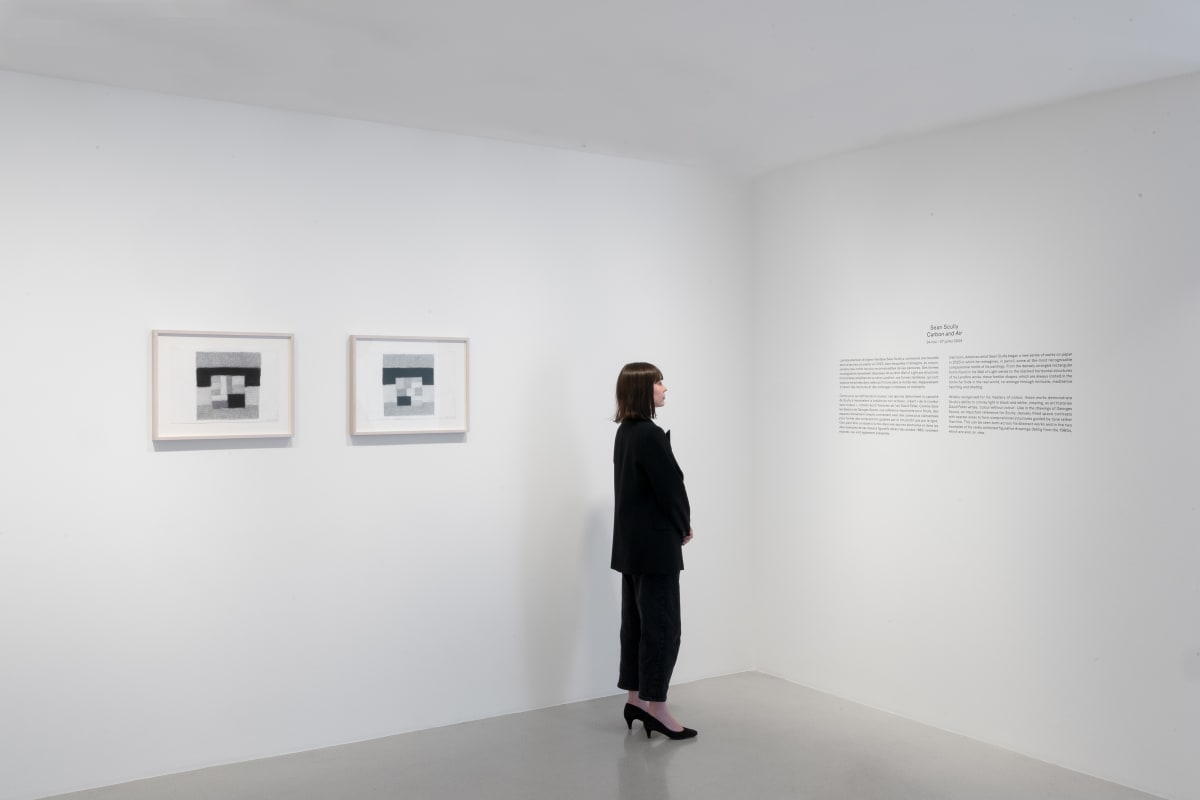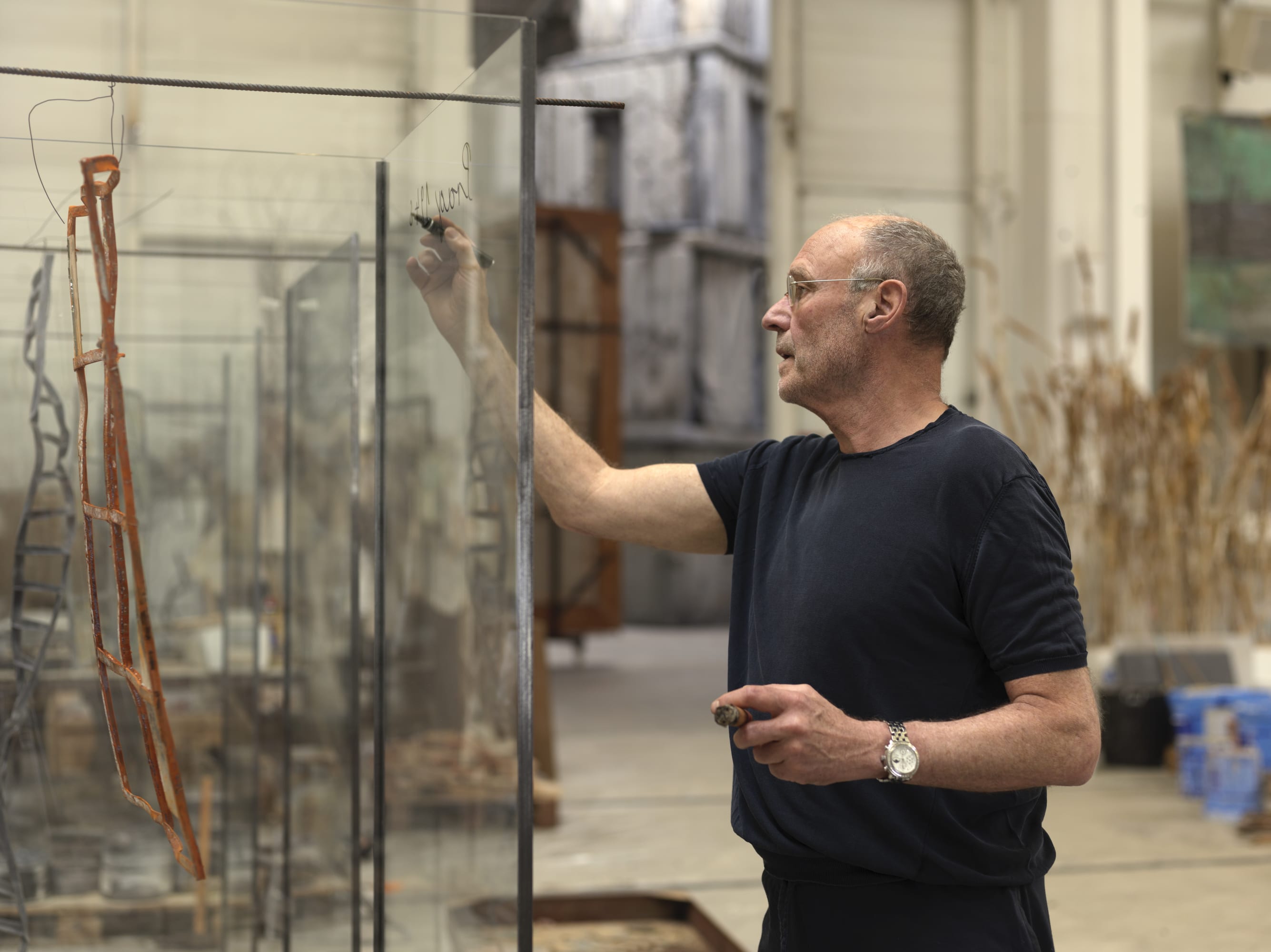

Anselm Kiefer
Overview
'Art cannot live on itself. It has to draw on a broader knowledge. It needs to bear the scars of the world, the wounds of life.'
Anselm Kiefer's ongoing preoccupation with cultural memory, identity and history lends his works their multi-layered subject matter, fuelled by a variety of historical, mythological and literary sources. These include references to Greek and Germanic mythology, alchemy, and Christian symbolism, as well as the writings of celebrated medieval lyricist Walther von der Vogelweide, Romanian-born poet Paul Celan, French poet and critic Charles Baudelaire, Russian Futurist Velimir Khlebnikov, and Austrian post-war poet Ingeborg Bachmann, among others.
Over the past forty years, Kiefer's practice has developed through the accumulation, mingling and reworking of themes, motifs and constellations which recur across diverse media. The language of material plays an essential role in his works, which often have a sedimentary geological texture. Highly symbolic connections emerge from lead, concrete, dirt, dried plants, glass, barbed wire and the inclusion of found objects such as books, scythes and model ships. Lead is of particular importance to the artist, who has described it as 'the only material heavy enough to carry the weight of human history'. Many of his chosen materials and themes contain alchemical references, such as the transmutation of base metals into gold that becomes a metaphor for spiritual enlightenment.
Anselm Kiefer's ongoing preoccupation with cultural memory, identity and history lends his works their multi-layered subject matter, fuelled by a variety of historical, mythological and literary sources. These include references to Greek and Germanic mythology, alchemy, and Christian symbolism, as well as the writings of celebrated medieval lyricist Walther von der Vogelweide, Romanian-born poet Paul Celan, French poet and critic Charles Baudelaire, Russian Futurist Velimir Khlebnikov, and Austrian post-war poet Ingeborg Bachmann, among others.
Over the past forty years, Kiefer's practice has developed through the accumulation, mingling and reworking of themes, motifs and constellations which recur across diverse media. The language of material plays an essential role in his works, which often have a sedimentary geological texture. Highly symbolic connections emerge from lead, concrete, dirt, dried plants, glass, barbed wire and the inclusion of found objects such as books, scythes and model ships. Lead is of particular importance to the artist, who has described it as 'the only material heavy enough to carry the weight of human history'. Many of his chosen materials and themes contain alchemical references, such as the transmutation of base metals into gold that becomes a metaphor for spiritual enlightenment.
While many of his works can be interpreted in the context of fraught German identity in the post-war era, Kiefer's preoccupation with myth and memorialisation encompasses the full sweep of human history. This is expressed not only thematically, but also on the level of form itself, through his treatment of materials and use of texture. The dense tactility of his works suggest the accumulations of history, year upon year, strata upon strata, with worn surfaces that seem to reflect the ravages of passing time. This is amplified in canvases and sculptures that are intentionally left outside to become weathered by the elements: 'I need nature, the changing weather, the heat and the cold. Sometimes I leave my paintings out in the rain, I throw acid, earth or water over them.' Change and decay are built into his works, which continue to evolve organically even after they are 'finished'.
The preservation of knowledge is an important theme for Kiefer, whose extensive study of history and literature informs his practice. This is reflected in his numerous artist's books and book sculptures, which represent important repositories of learning, religion and culture. He inscribes lines of poetry, quotations and names in his distinctive handwriting on works that pay tribute to predecessors who have shaped our knowledge and understanding of the world. As he explains, 'I think in pictures. Poems help me with this. They are like buoys in the sea. I swim to them, from one to the other. In between, without them, I am lost. They are the handholds where something masses together in the infinite expanse. Sometimes the ruins of things past condense into new words and contexts.'
Anselm Kiefer was born in 1945 in Donaueschingen, Germany. In 1992, he moved to France, where he lives and works between Paris and Barjac near Avignon. The artist studied law, literature and linguistics before attending the Academy of Fine Arts in Karlsruhe, and later in Düsseldorf, where he was a student of Joseph Beuys. He was selected for the West German Pavilion at the 39th Venice Biennale in 1980 and his works have since been shown in prominent solo exhibitions internationally, including at the Städtische Kunsthalle Düsseldorf (1984); Art Institute of Chicago (1987); Nationalgalerie, Berlin (1991); Metropolitan Museum of Art, New York (1998); Fondation Beyeler, Basel (2001); Guggenheim Bilbao (2007); Royal Academy of Arts, London (2014); Centre Pompidou, Paris (2015); Bibliothèque National de France (2015); Albertina, Vienna (2016); State Hermitage Museum, St. Petersburg (2017); Rodin Museum, Paris (2017); Met Breuer, New York (2018); Astrup Fearnley Museet, Oslo (2019).
Kiefer was presented the Praemium Imperiale Award by Japan in 1999, and in 2008 he received the Peace Prize of the German Book Trade. In 2007 he was the first artist since Georges Braque to have a permanent installation commissioned for the Louvre in Paris, and in 2018 his site-specific sculpture Uraeus was exhibited in front of the Rockefeller Center, New York.
French President Emmanuel Macron commissioned Anselm Kiefer to create a permanent installation for the Panthéon in Paris in 2020. An exhibition of monumental works by Anselm Kiefer dedicated to Paul Celan was on view at the Grand Palais Éphémère in Paris until 11 January 2022.
Videos

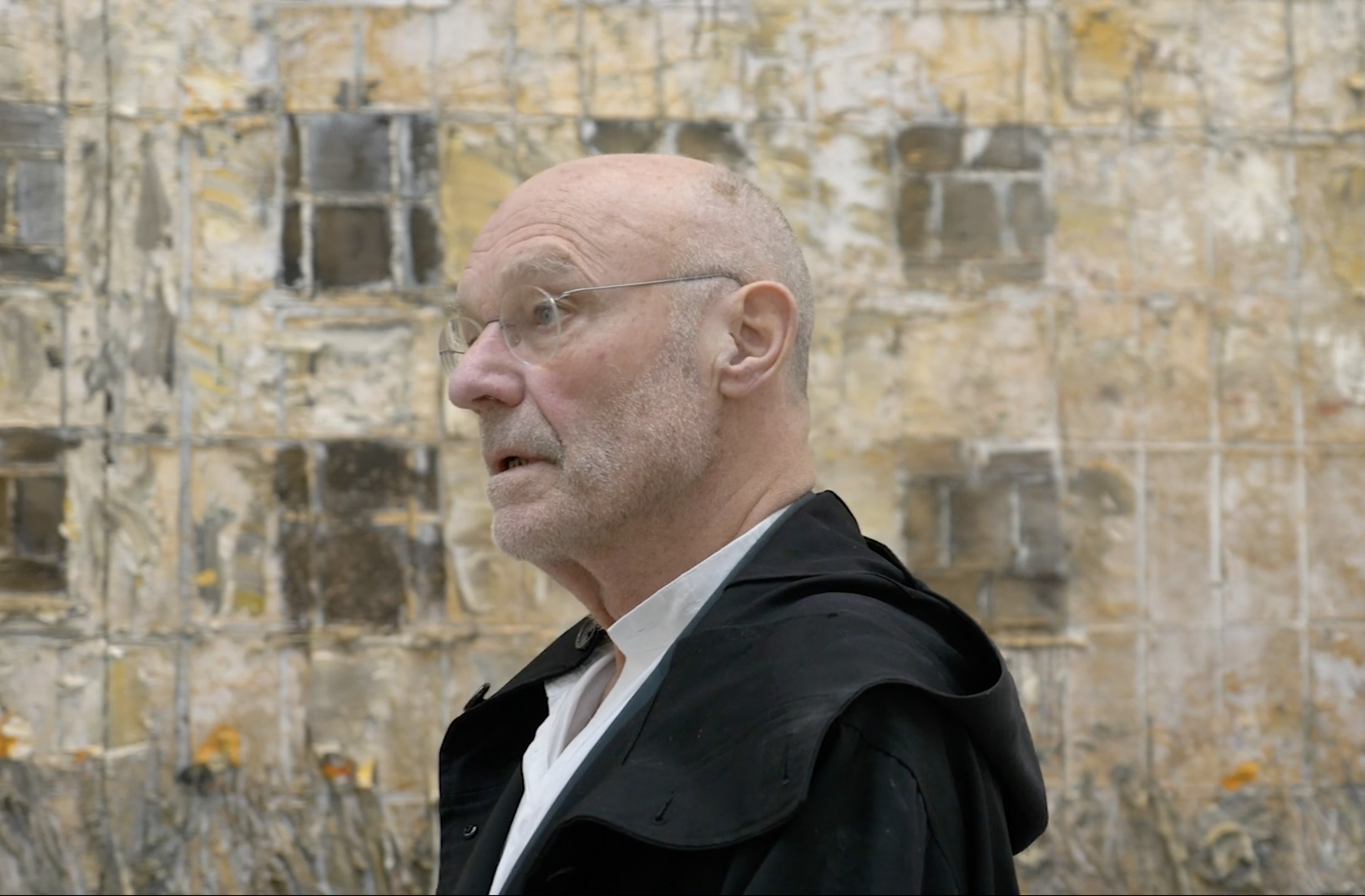
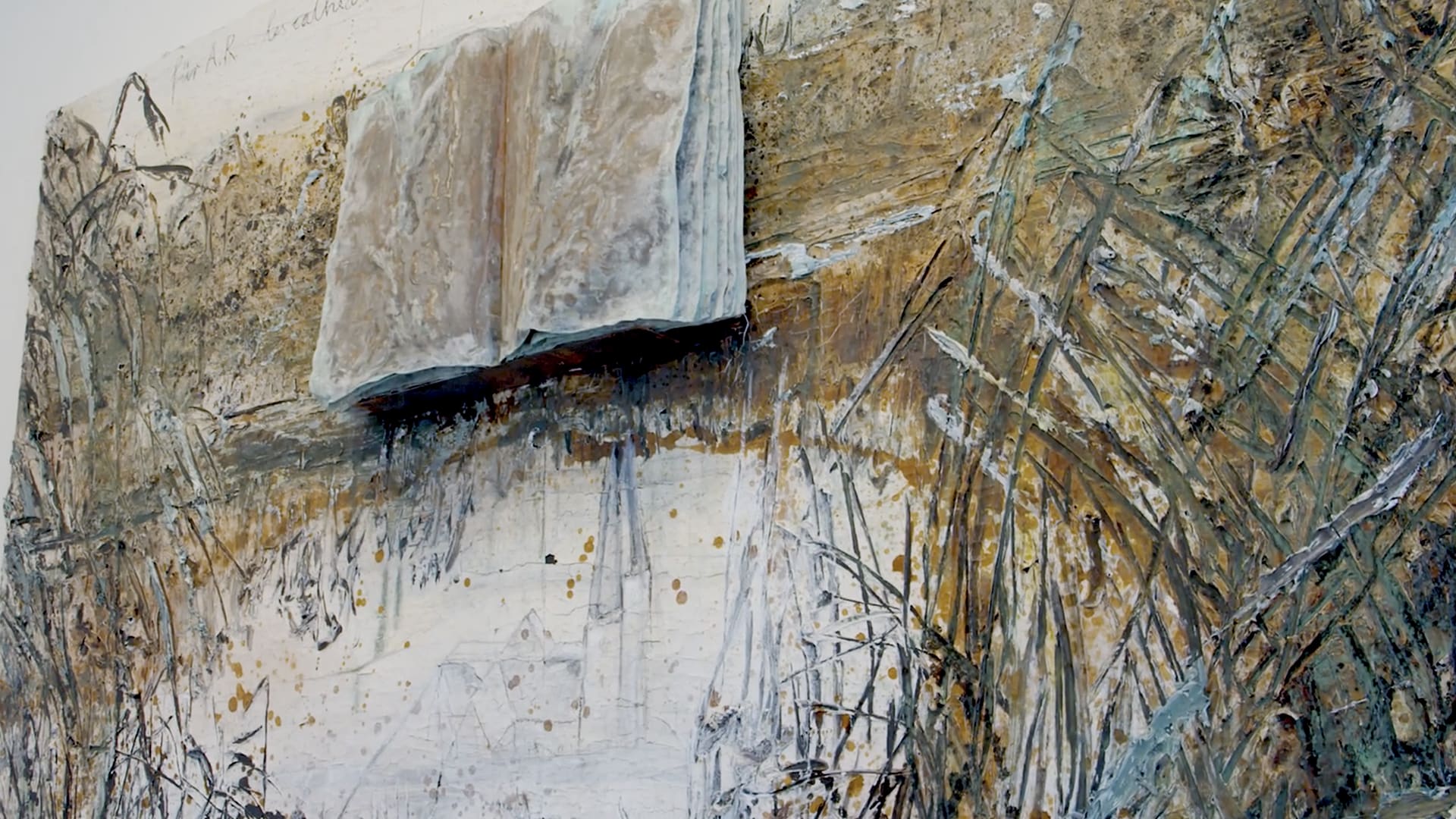
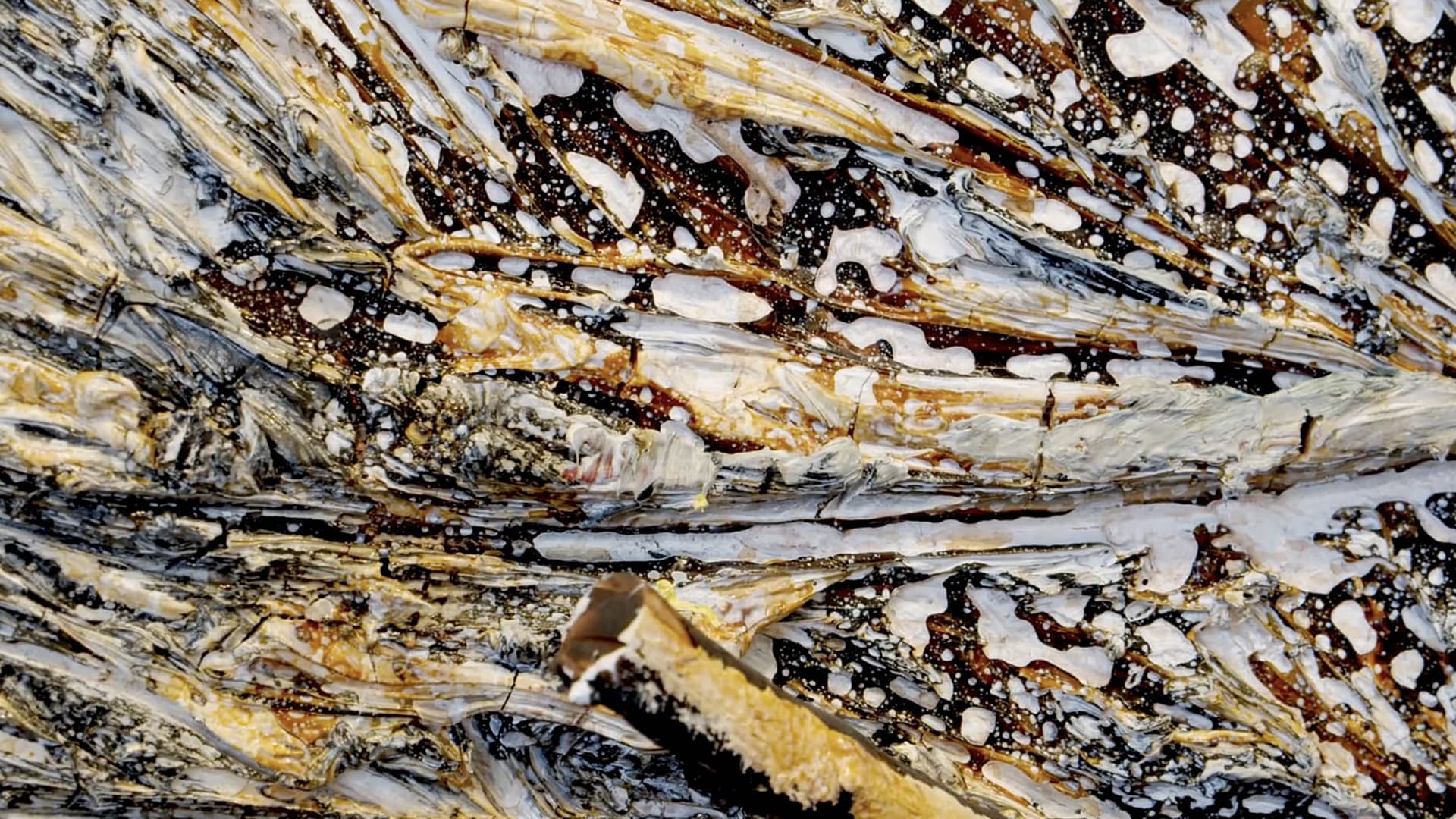







Artworks
Exhibitions
Publications

Anselm Kiefer
Mein Rhein
Publications

Anselm Kiefer

Anselm Kiefer

Anselm Kiefer

Anselm Kiefer

Anselm Kiefer

Anselm Kiefer

